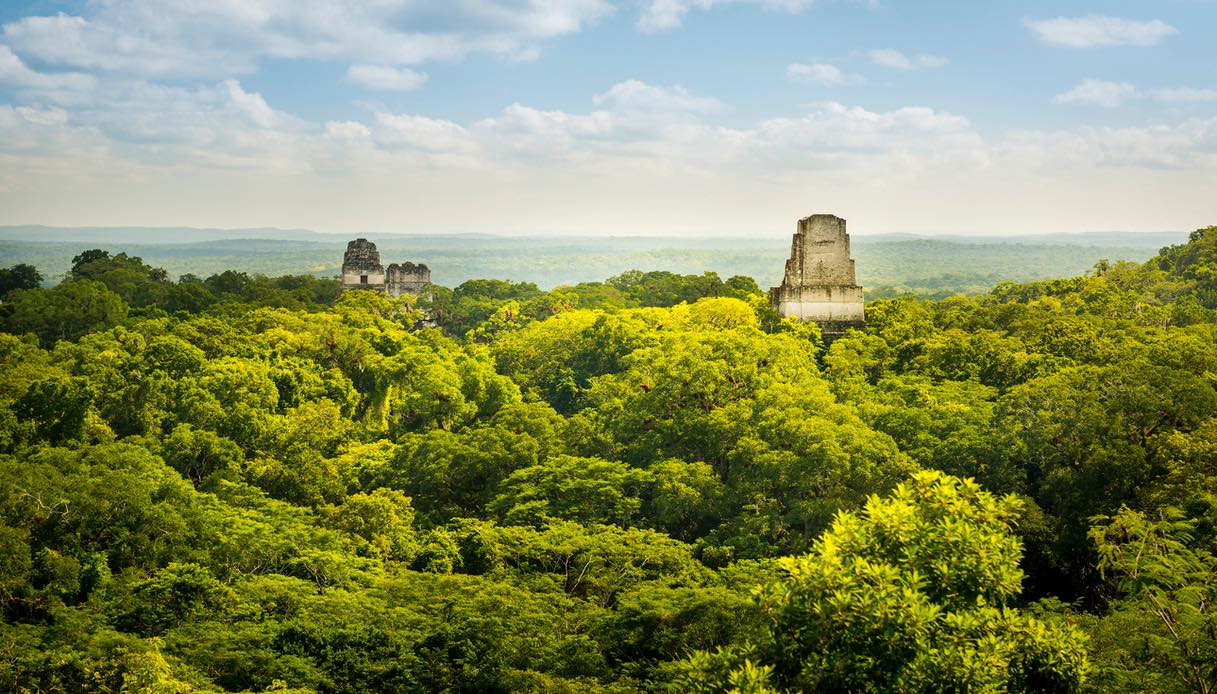An unprecedented investigation, conducted using a sophisticated laser scanning system, has led to the discovery of nearly a thousand ancient settlements that are said to reveal the existence of Mayan society More developed, more densely populated and uniform than expected so far.
Discover the lost Mayan civilization in Guatemala
The investigation conducted in Mirador Calakmul Karst Basin affiliate Guatemala North, made it possible to discover 964 The hitherto unknown ancient Mayan settlements, hidden under dense jungle, mostly date from the Pre-classic period, which lasted from about 1000 BC until about 150 BC.
This is an extraordinary find, both for the size of the sites, which cover an area of approximately 1,685 square kilometres, and for the nature of the settlements. The startling discovery is the work of an international research team led by US scientists from the Foundation for Anthropological Research and Environmental Studies (FARES) and Idaho State University, who have collaborated closely with the University of Texas’ Department of Geography and Environment, University of San Carlos-Guatemala City’s School of History, the Mirador Basin Project and other institutions.
The new civilization came to light thanks to remote sensing technology lidar (Laser imaging detection and ranging) that uses a laser pulse, has been used in recent years to scan the dense tropical rain forests for signs of ancient civilizations, as happened, for example, for the mysterious monument in Forest of Dean in the UK or to Lost city in Honduras. These systems are, in fact, capable of penetrating thick plant crowns, revealing what is on the ground beneath.
Nearly a thousand settlements are hidden in the dense jungle
The scientists, coordinated by Professor Richard D. Hansen, has been flying over the basin with LiDAR instruments for years to search for hidden traces of ancient settlements. To their delight, the investigation led to a unique discovery. More than 900 settlements are currently grouped in 417 ancient cities, towns and villages Which, according to the study, indicates a centralized and complex political structure. These constructions include dozens of Playgrounds Mesoamerica sports a complex system of water management consisting of canals and reservoirs.
Monumental architecture, site specific boundaries, 195 tanksbehind them 177 km of bridges that linked the different settlements, indicates a higher social and economic cohesion than that of smaller communities in these periods. Among the structures discovered there too Great step pyramids It dates to the late Middle Preclassic period. works that, as the researchers explain in the study published in the International Forum Ancient Mesoamerica, “It required massive amounts of work and resources, concentrated by a supposedly centralized organization and management.”
Therefore, the Maya civilization had the ability to organize thousands of highly skilled workers, technicians, specialists, architects, law enforcement officials, and religious leaders, all to work in a political and ideological homogeneity, suggesting the existence of a powerful kingdom-state in the region, of which we had not even known right Now.
The team of researchers also explored the remains Danta pyramidin the Mayan city El Mirador, which was once the center of the city and one of the largest ancient structures. It would have taken as many as 158 workers just five years to extract the more than 205,000 blocks of limestone that make up this colossal monument, which probably took between six and 10 million labor days to build.

“Introvert. Avid gamer. Wannabe beer advocate. Subtly charming zombie junkie. Social media trailblazer. Web scholar.”


